The Great Migration
The end of the Asian Elephant era: Taronga Zoo Sydney’s Asian Elephants have trunked out. Asian Elephants Tang Mo and Pak Boon have completed their mammoth move, arriving at Monarto Safari Park in South Australia on Wednesday 30 April 2025. Following the elephants’ move, works has commenced for a new mixed species habitat for a Greater One-horned Rhinoceros and Water Buffalo.
In April 2024 and after more than a century of history, Taronga announced plans for the departure of Asian Elephants from Taronga Zoo Sydney. This decision was made with best animal welfare practices in mind, as the rare opportunity presented to form a new social herd with three other elephants from Auckland Zoo and Perth Zoo at Monarto Safari Park in South Australia.
While these magnificent animals will certainly be missed in Sydney, we’re so pleased that their move to Monarto Safari Park allows them to join a bigger social herd.
Taronga Conservation Society Australia CEO Cam Kerr AO said:
"Under the dedicated care of our Taronga team, Tang Mo and Pak Boon have safely arrived at their new home at Monarto Safari Park in South Australia. This marks an exciting new chapter for them — one where they’ll join a larger, matriarchal-led herd and have the opportunity to form new social bonds.
Tang Mo and Pak Boon have been deeply loved members of our Taronga community, and while we will miss them dearly, this move reflects the strength of collaboration within the zoo community that spans across Australasia.
Taronga’s journey with elephants continues, with a thriving, multi-generational herd of seven elephants at Taronga Western Plains Zoo, where we remain a key part of the regional breeding program.
I want to sincerely thank every member of the Taronga community — from keepers and vets to nutrition, trades, and support teams — for their years of unwavering care. It is because of their commitment that milestones like this are possible."
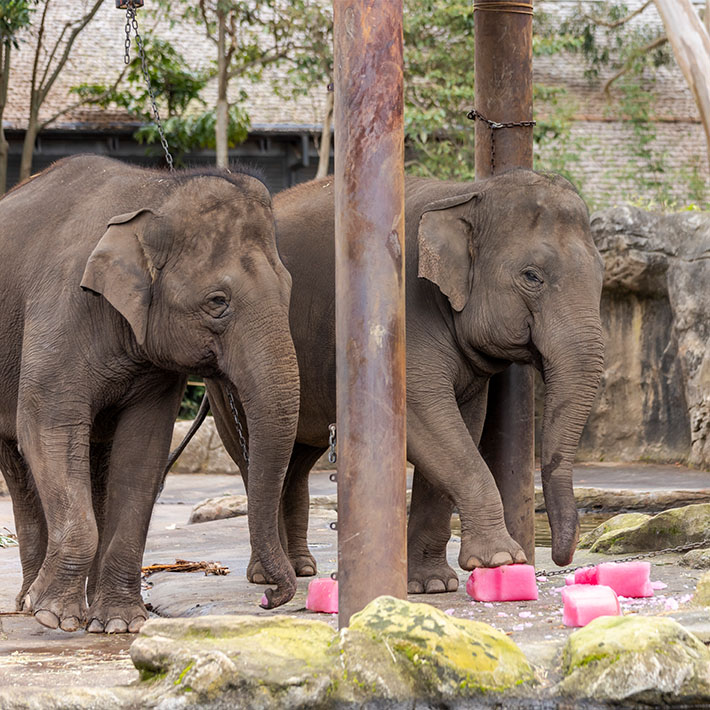
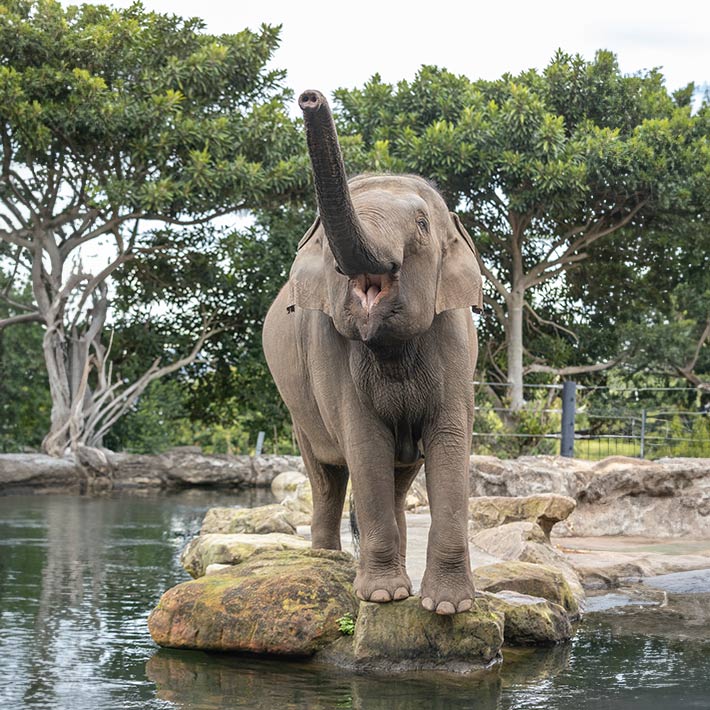
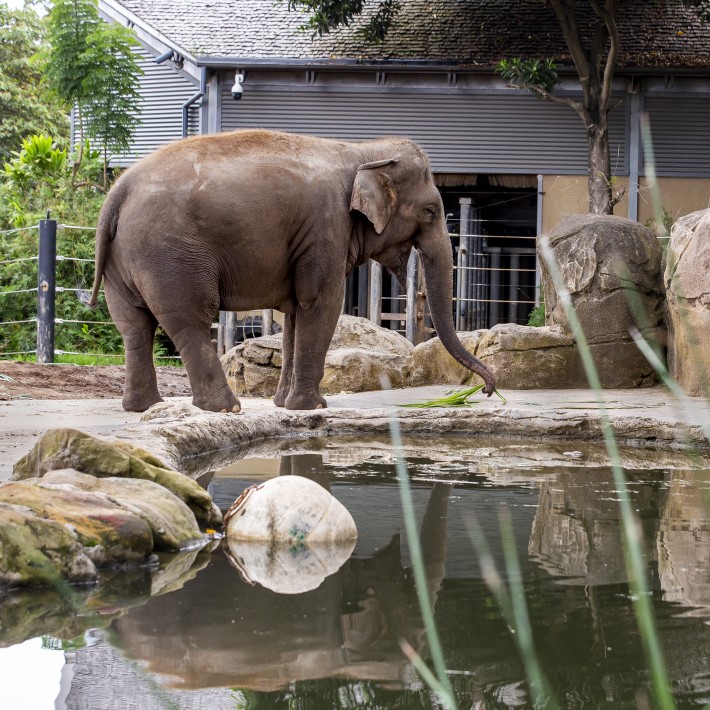
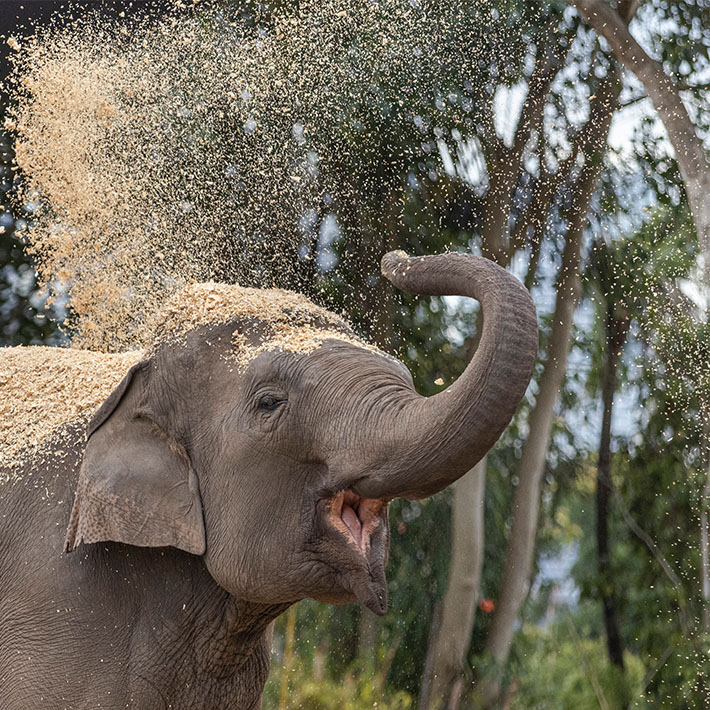
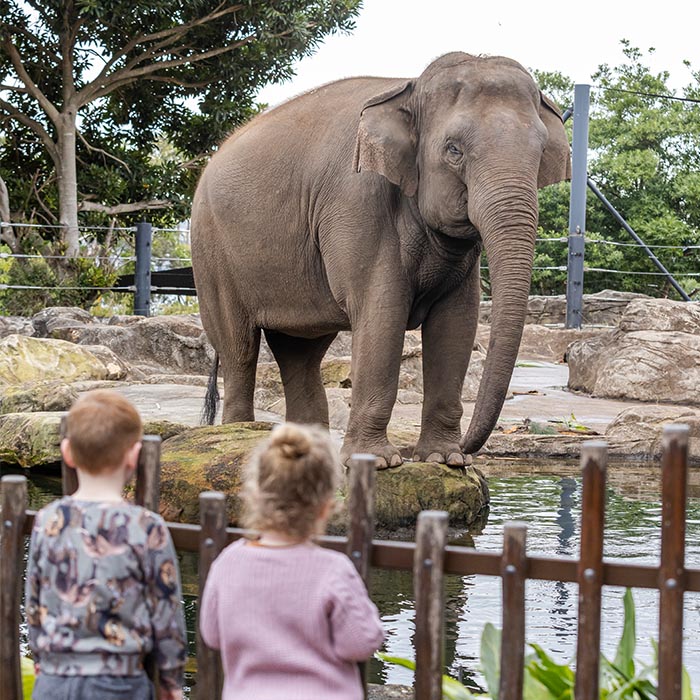
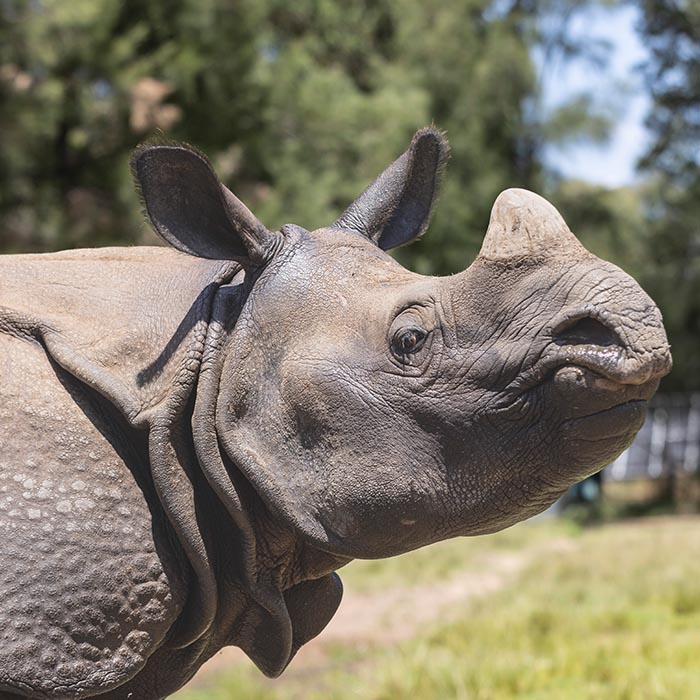
Watch the video to see the whole big move
Say hello to ‘Hari’
As part of a Great Migration, the elephants’ departure makes way for a new, multi-species habitat at Taronga Zoo featuring ‘Hari’, a young Greater One-Horned Rhinoceros who will move from Taronga Western Plains Zoo, joining several Water Buffalo.
Greater One-horned Rhinoceros are one of the largest species of rhino and often referred to as “real life unicorns” due to their distinctive solo horn which distinguishes them from other Rhinoceros species.
Hari is one of just three Greater One-Horned Rhinos in Australia, all of whom currently reside at Taronga Western Plains Zoo. Now weighing 1,500 kg, Hari has reached the age where he would naturally leave his mother, Amala, to go out on his own.
With a love for water and a passion for mud wallowing, Hari is sure to make a splash at Taronga Zoo Sydney. More importantly, he will serve as a vital ambassador for his species, which is classified as vulnerable, with only around 4000 remaining in the wild today.
Stay tuned as we prepare to welcome Hari and his herd to their new home in Sydney.
Fun facts
- With thick skin folds like armour, the Greater One-Horned Rhino is the largest of the Asian rhino species weighing between 1800 - 2,700kg.
- They are herbivores, mainly eating grasses, fruits, leaves, and aquatic plants.
- They are semi-aquatic and thrive in floodplain grasslands, wetlands, and forests.
- Greater one-horned rhinos make different sounds to communicate including snorts, honks, and roars.
- They are very good swimmers and can even dive and feed underwater.
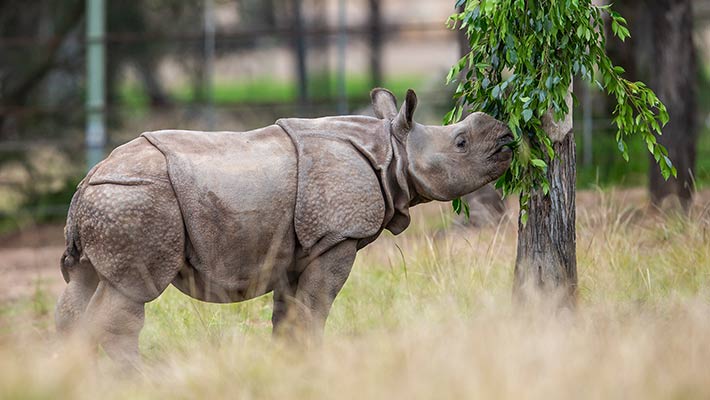
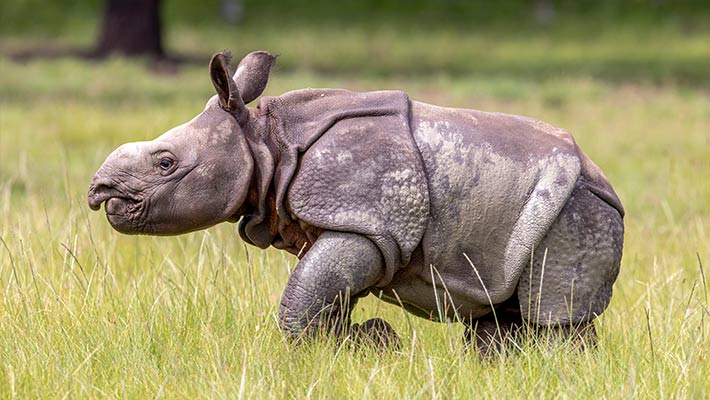
A Legacy That Spans Over A Century?
Elephants have been part of the Taronga Zoo Sydney experience for more than a century, ever since Jessie the Asian Elephant made an iconic journey through the streets of Sydney from Moore Park to Mosman in 1916.
Taronga’s journey with elephants is far from over and we will continue our work to conserve this Asian Elephants in the wild - from Thailand to Sumatra, and continue to play an important role in the regional breeding program with seven elephants in the thriving, multi-generational herd at Taronga Western Plains Zoo in Dubbo – with a new arrival due at the end of 2025.
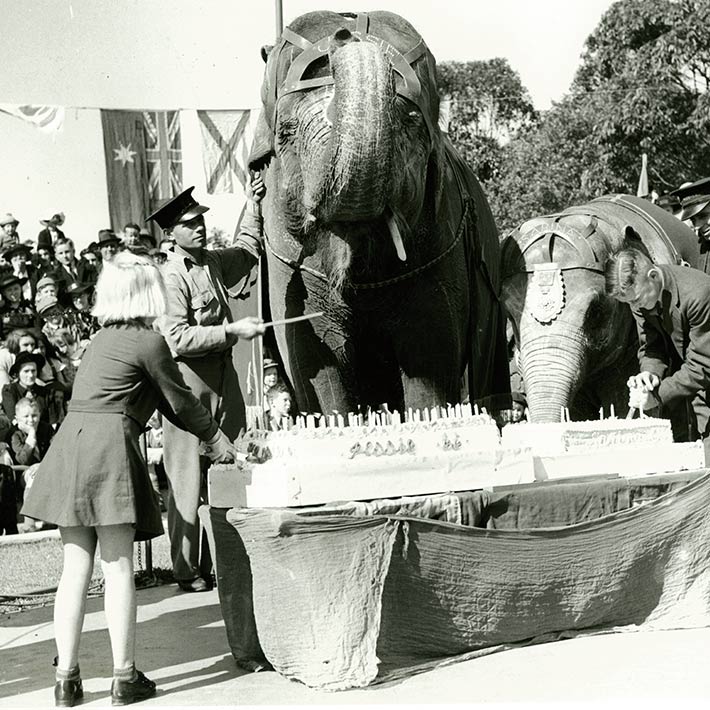
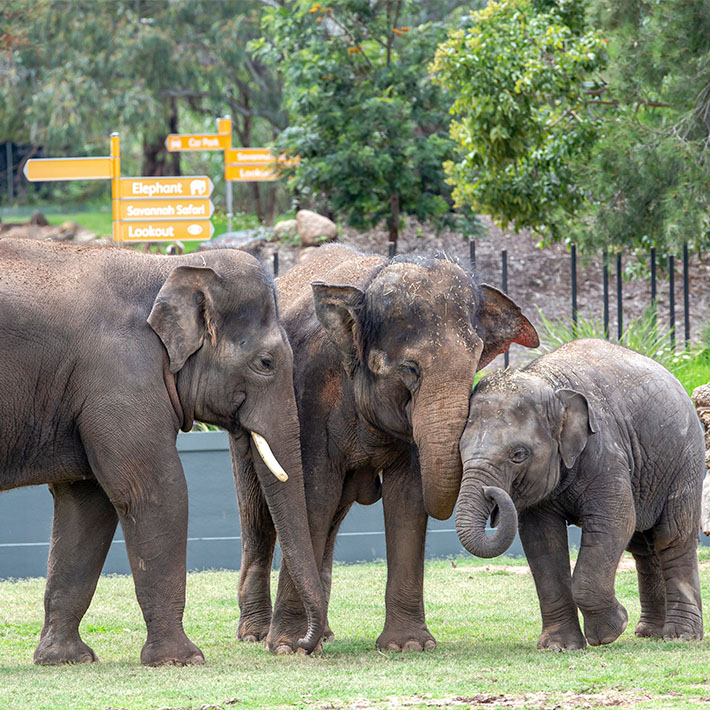
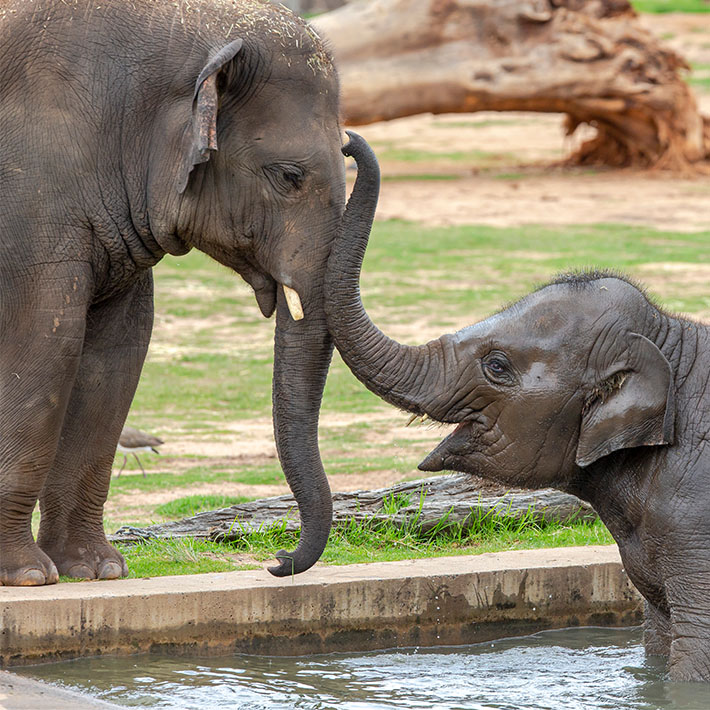
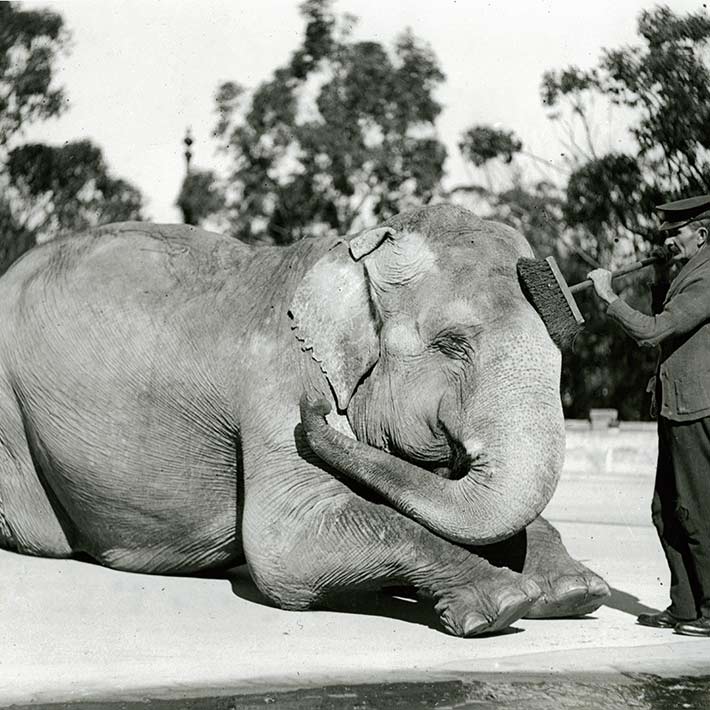
FAQ's
Got questions about Taronga's Elephants? See below for our frequently asked questions about these beloved megafauna.
Where did Taronga Zoo Sydney's Elephants move?
Tang Mo and Pak Boon arrived safely after a 22-hour journey across three states to a newly established elephant habitat at Monarto Safari Park in South Australia.
When did Taronga's Elephants move to Monarto Safari Park?
Asian Elephants Tang Mo and Pak Boon departed Taronga Zoo Sydney on Tuesday 29 April, driving overnight in a convoy, arriving at Monarto Safari Park in South Australia on Wednesday 30 April.
What other Elephants will form the herd at Monarto Safari Park?
Tang Mo and Pak Boon join female elephant Burma (41) who moved from Auckland Zoo in 2024, female elephant Permai (11) who moved in January 2025 and a male elephant Putra Mas (33) who will move from Perth Zoo mid-2025.
Why has Taronga made the decision to move the Elephants from Taronga Zoo Sydney?
While Tang Mo and Pak Boon are much loved zoo residents and they will be dearly missed, the move gives them the opportunity to become part of a larger, social herd joining three other elephants from Auckland Zoo and Perth Zoo.
Will their keepers move to South Australia with them?
Keepers from Taronga Zoo Sydney accompanied Tang Mo and Pak Boon on the journey to South Australia. Our elephant keepers, who remain employed by Taronga, will stay with the elephants for as long as needed before handing over care to the skilled team at Monarto Safari Park.
Why won’t the elephants be going to Taronga Western Plains Zoo?
Taronga Western Plains Zoo, Dubbo, is and will continue to be, an important player in the regional breeding program for Asian Elephants in Australasia. The herd at Taronga Western Plains Zoo is a dynamic, multi-generational breeding herd and are expecting a calf in late 2025. It is important that we maintain the strong, social stability between the females in the herd, continue to breed and provide a healthy and enriched environment for young elephants Sabai and Kanlaya.
While moving either Pak Boon or Tang Mo, or both to Taronga Western Plains Zoo was considered, the establishment of a new herd at Monarto Safari Park provides a great opportunity to continue the Asian Elephant conservation and breeding program in Australia, bringing together multiple individuals from facilities across Australasia to increase the social herd dynamic. This newly formed cohesive social herd will continue the incredible educational and conservation conversations with the public about this endangered species.
We know that seeing and connecting with an animal is one of the best ways to forge a relationship and deep understanding with public, and we believe that Tang Mo and Pak Boon will continue to inspire many generations to come in their new herd.
How are the keepers doing?
The team have known of the plans to move the elephants from Taronga Zoo Sydney for some time, but their departure is still be deeply felt by the keepers and our entire zoo community. Some of our keepers have worked with Tang Mo and Pak Boon since before they arrived at Taronga Zoo from Thailand. We are profoundly grateful to the team of exceptional elephant keepers who have cared for and worked with these elephants for so many years and contributed to advancements in the care for elephants beyond our zoos.
Will there still be Elephants at Taronga Western Plains Zoo?
Yes! You will still be able to see Elephants at Dubbo Zoo.
What happens to the Elephant keepers? Will they work with other animals?
The Elephant keepers remain employed by Taronga Zoo Sydney and will spend some time with Pak Boon and Tang Mo as they settle into their new home at Monarto Safari Park. The arrival of a Greater One-horned Rhinoceros and Water Buffalo will provide new opportunities for the team, many of whom have already worked with these species. Zookeepers are skilled at working across many animal groups, and with more than 4,500 animals across 350 species across Taronga, their expertise will be in high demand should they wish to remain with Taronga.
What happens to the Elephant habitat now?
As part of a Great Migration, the elephants’ departure makes way for a new, multi-species habitat at Taronga Zoo featuring Greater One-Horned Rhinoceros and Water Buffalo. Greater One-horned Rhino are one of the largest species of Rhinoceros and often referred to as “real life unicorns” due to their distinctive solo horn which distinguishes them from other Rhino species.
When will we be able to see the Greater One-horned Rhinoceros in Sydney?
The exact timing for the arrival of Hari the Greater One-horned Rhinoceros is aimed for late 2025 after some necessary modifications are made to the existing habitat to make it rhino friendly.